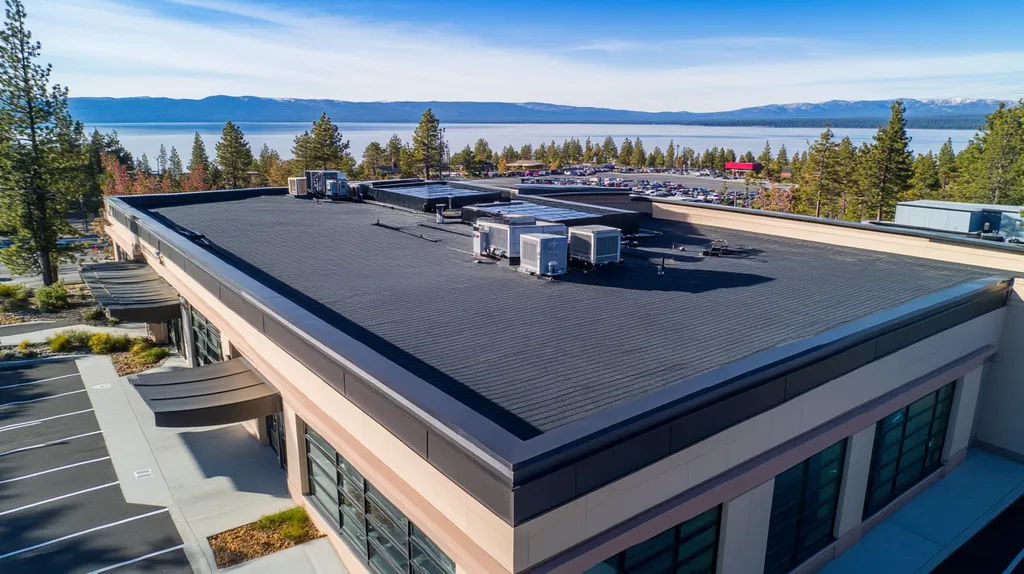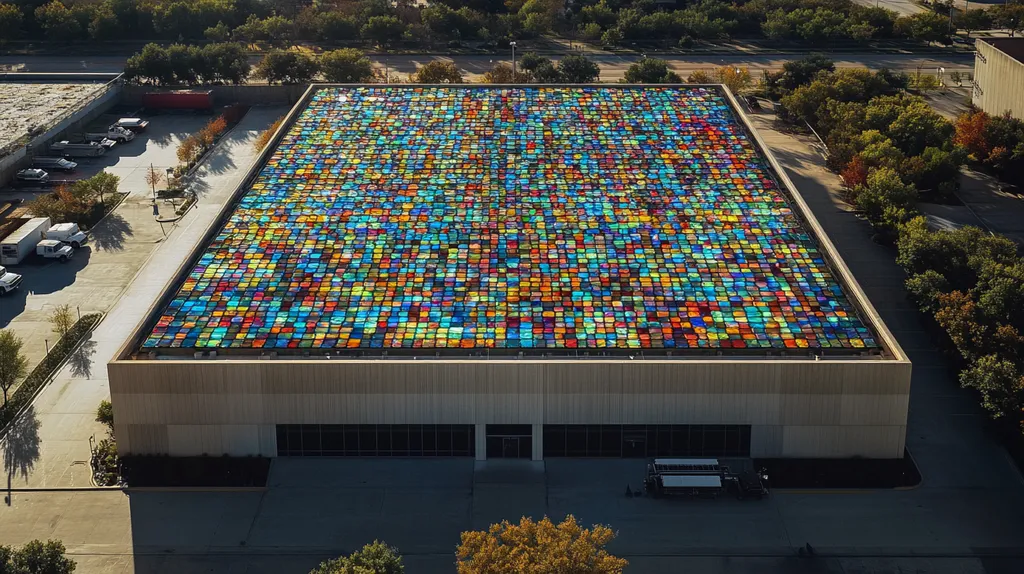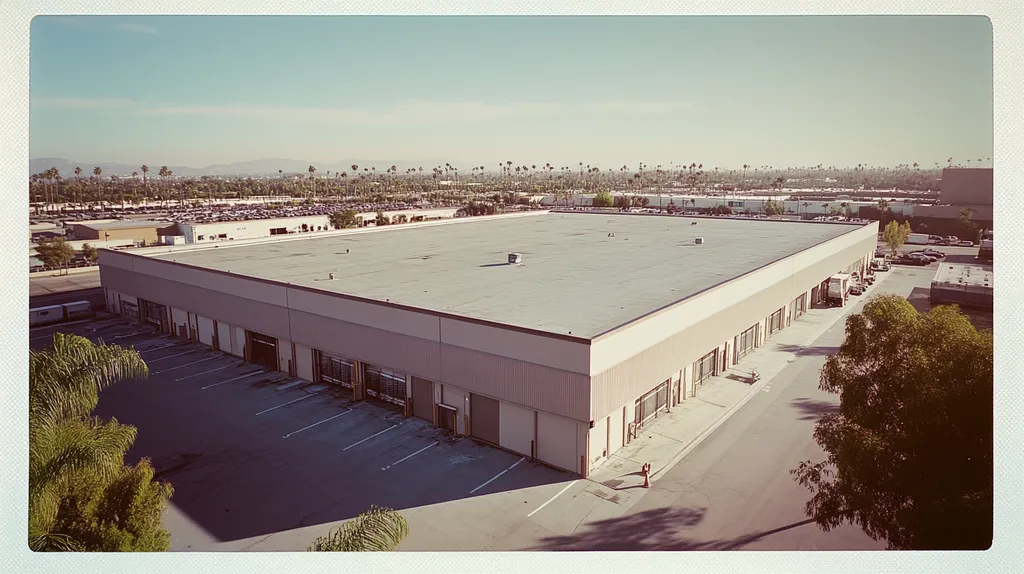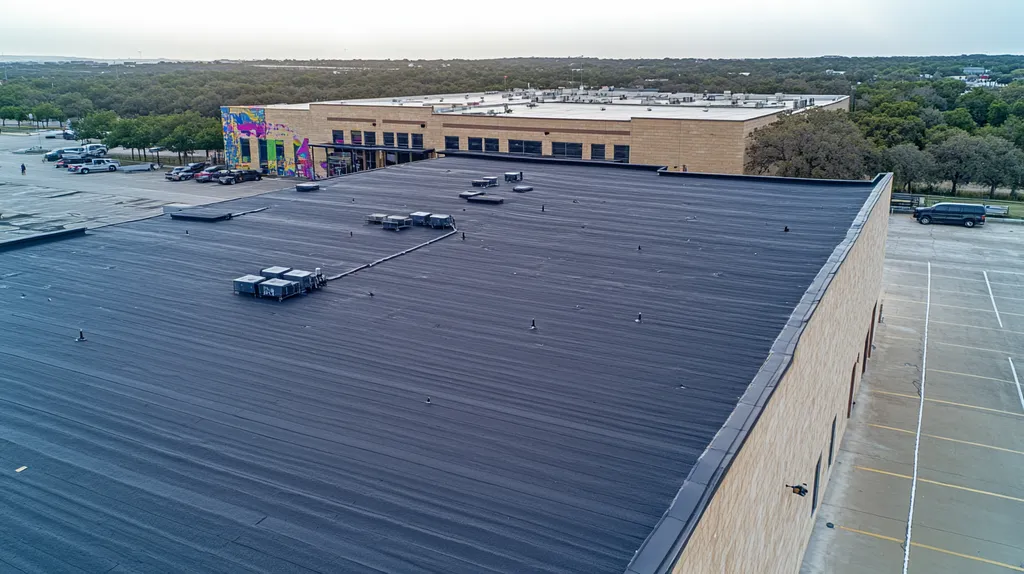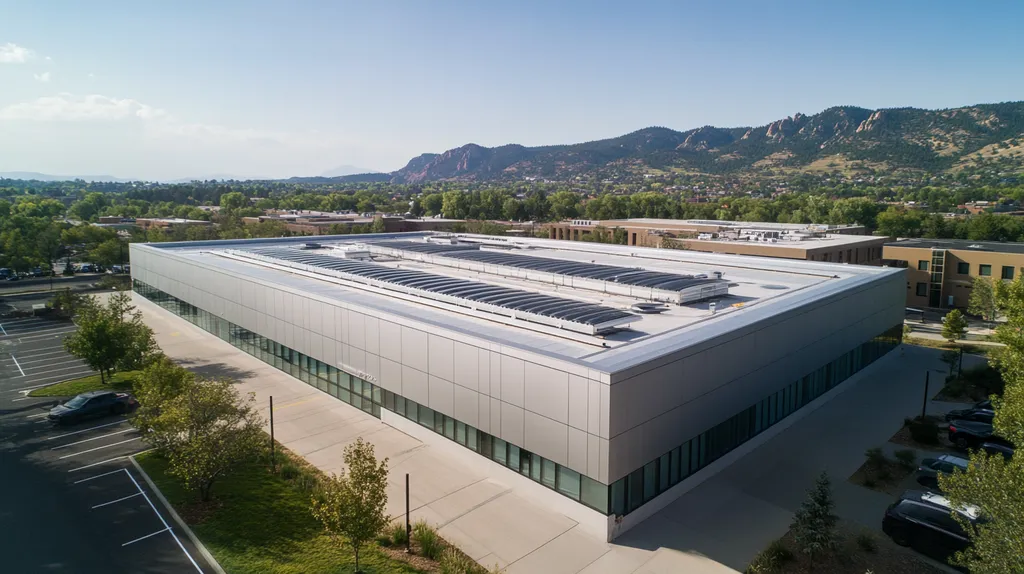Welcome to today’s Battle Royale featuring two roofing heavyweights: “TPO” in the east corner versus “PVC” in the west!
Tonight’s showdown pits these contenders against each other across six punishing rounds designed to test every aspect of their performance for new commercial roof installation.
At stake? Millions in potential costs, decades of building protection, and the critical performance demands of modern commercial and industrial facilities.
Our professional judging panel will evaluate each round on technical merit, real-world performance, and value delivery. After all six rounds, we’ll declare our ultimate champion.
Ladies and gentlemen, facility managers and building owners… it’s time to rumble!
ROUND 1: INITIAL COSTS & INSTALLATION
When planning a commercial roof installation, property owners face critical decisions that impact both immediate costs and long-term performance. The selection between TPO and PVC roofing systems determines not only the initial investment but also affects installation timelines and operational disruptions. Property owners must navigate permit requirements, material costs, and installation complexities to make an informed choice.
Material Expenses
Before installation begins, property owners must secure proper building permits and complete specific documentation. A Building Permit Application and Commercial Re-Roof Only Worksheet are required, with all documentation maintained on-site until final approval. (source: City of Houston Permitting Center)
TPO materials typically cost 15-20% less than PVC alternatives, making them an attractive option for budget-conscious projects. This cost advantage stems from simpler manufacturing processes and fewer chemical additives.
PVC materials command premium pricing due to their advanced chemical formulation and enhanced durability. While the upfront cost is higher, the material’s resistance to chemicals and environmental stress often justifies the investment.
For pure material costs, TPO claims the “ADVANTAGE” in this category.
Installation Complexity
TPO installation follows straightforward protocols that most roofing crews can master quickly. The material’s flexibility and wider sheets reduce the number of seams needed, streamlining the installation process.
PVC installation demands specialized training and equipment, particularly for proper heat welding of seams. The precise temperature control and technique required can slow down the installation process.
The additional expertise needed for PVC installation often increases labor costs and extends project timelines. This complexity can impact both scheduling and budget considerations.
Due to its simpler installation requirements, TPO takes the “ADVANTAGE” here.
Project Timeline
TPO installations typically complete 20-30% faster than comparable PVC projects. The reduced complexity and fewer specialized techniques contribute to this efficiency advantage.
PVC installations require more time for proper seam welding and quality control checks. Each connection point must be carefully monitored to ensure watertight integrity.
Weather sensitivity during installation also favors TPO, as it has a broader temperature range for effective installation. This flexibility helps maintain project schedules even in challenging conditions.
TPO’s faster completion rates earn it the “ADVANTAGE” in timeline considerations.
ROUND 1 WINNER: TPO
ROUND 2: DURABILITY & LIFESPAN
When evaluating commercial roofing systems, durability and lifespan directly impact the total cost of ownership. A premature roof failure can trigger catastrophic expenses, from emergency repairs to inventory damage and business interruption. Understanding how TPO and PVC membranes perform over time is crucial for making an informed investment decision.
Weather Resistance
TPO roofing membranes demonstrate strong initial resistance to UV radiation and heat exposure. Their reflective white surface helps maintain consistent performance in hot climates, while the material’s flexibility allows it to handle thermal cycling without cracking.
However, TPO’s weather resistance can degrade over time, particularly in regions with extreme temperature fluctuations. Some formulations show signs of premature aging when subjected to prolonged heat exposure above 140°F.
PVC membranes excel in extreme weather conditions, maintaining their protective properties even after decades of exposure. Their chemical composition provides superior resistance to thermal stress, UV degradation, and moisture penetration.
For long-term weather resistance, PVC claims the clear “ADVANTAGE” in this category.
Chemical Resistance
TPO offers adequate resistance to common rooftop pollutants and mild chemical exposure. The membrane can withstand occasional contact with grease, oils, and mild acids without immediate degradation.
However, TPO’s chemical resistance has limitations, particularly when exposed to industrial emissions or harsh cleaning solutions. Extended contact with certain chemicals can compromise the membrane’s integrity.
PVC roofing provides superior chemical resistance across a broader spectrum of substances. Its molecular structure creates an impenetrable barrier against acids, oils, and industrial chemicals, making it ideal for manufacturing facilities.
PVC’s superior chemical resistance earns it the “ADVANTAGE” in this category.
Physical Durability
TPO membranes demonstrate good resistance to tears and punctures in their early years. The material’s flexibility helps absorb impact from foot traffic and minor debris without immediate damage.
Over time, TPO can become more brittle and susceptible to physical damage. Regular maintenance inspections become increasingly critical as the membrane ages.
PVC maintains its physical strength throughout its service life, resisting punctures and tears even after decades of exposure. The material’s consistent performance reduces the risk of damage from routine maintenance activities.
Based on long-term physical durability, PVC takes the “ADVANTAGE” here.
ROUND 2 WINNER: PVC
ROUND 3: PERFORMANCE FACTORS
Performance factors determine not just immediate functionality but also long-term return on investment for commercial roofing systems. Studies show that poor performance choices can increase energy costs by up to 40% and lead to premature system failure. Understanding how TPO and PVC systems perform across key metrics helps property owners make decisions that protect both their buildings and bottom lines.
Energy Efficiency
Energy efficiency remains a top priority for commercial property owners facing rising utility costs. TPO membranes excel in this area, with their highly reflective surface reducing cooling loads by up to 30% in warm climates.
TPO maintains its reflective properties throughout its lifespan, requiring minimal maintenance to preserve these energy-saving benefits. The material’s performance in this area contributes significantly to building sustainability goals.
PVC roofing also offers good reflective properties but typically requires more frequent cleaning to maintain optimal performance. Over time, PVC may experience slight degradation in its reflective capabilities.
For superior energy efficiency and consistent performance, TPO claims the “ADVANTAGE” in this category.
Durability and Longevity
A commercial roof must meet rigorous construction standards to ensure long-term performance. Construction documents sealed by licensed professionals are required to demonstrate code compliance for most commercial installations. (source: State of Michigan Building Permit Information)
PVC roofing systems consistently demonstrate superior durability under extreme conditions. Their chemical composition provides exceptional resistance to punctures, tears, and environmental stressors.
TPO systems, while initially robust, may show signs of wear more quickly in challenging environments. Their performance can vary significantly based on installation quality and environmental conditions.
Given its proven track record of longevity, PVC takes the clear “ADVANTAGE” here.
Maintenance Requirements
Regular maintenance significantly impacts both operational costs and system longevity. TPO roofing systems typically require minimal routine maintenance beyond regular inspections and basic cleaning.
The simplicity of TPO maintenance procedures makes them particularly attractive for facilities with limited maintenance staff. Most issues can be addressed through standard repair protocols.
PVC systems demand more specialized attention, particularly around seams and penetrations. Their maintenance procedures often require specific expertise and equipment.
Based on lower maintenance demands, TPO earns the “ADVANTAGE” in this category.
ROUND 3 WINNER: TPO
ROUND 4: MAINTENANCE REQUIREMENTS
Proper maintenance directly impacts both the longevity and performance of commercial roofing systems. Studies show that neglected maintenance can reduce a roof’s lifespan by up to 50% while increasing energy costs and repair expenses. Understanding the maintenance requirements for TPO and PVC systems helps property owners optimize their maintenance budgets and prevent catastrophic failures.
Regular Inspections
Commercial roof replacements and significant repairs require proper permits and documentation to ensure compliance with local building codes. Repairs affecting more than 50% of the roof structure demand special attention to ice barriers and flashing requirements. (source: Baltimore County Government)
TPO roofing systems typically require biannual inspections to check for seam integrity and membrane condition. These inspections can usually be performed by in-house maintenance staff following basic training.
PVC systems demand quarterly inspections with particular attention to weld quality and chemical exposure areas. These inspections often require specialized knowledge and equipment to properly evaluate system integrity.
Due to simpler inspection requirements, TPO claims the “ADVANTAGE” in this category.
Cleaning Requirements
TPO membranes feature a smooth surface that naturally resists dirt accumulation and biological growth. Most TPO roofs maintain their reflective properties with annual cleaning using standard commercial cleaning solutions.
The material’s resistance to environmental buildup means less frequent cleaning interventions, reducing both labor costs and potential membrane damage from maintenance activities.
PVC roofing requires more frequent cleaning to maintain its reflective properties and prevent chemical buildup. The membrane’s texture can trap debris, necessitating specialized cleaning procedures 2-3 times per year.
Based on reduced cleaning demands, TPO takes the “ADVANTAGE” here.
Repair Procedures
TPO repairs typically involve straightforward procedures that can be completed quickly with standard materials. Small tears or punctures can be addressed with membrane patches and heat welding.
The material’s consistent composition allows for reliable repairs that maintain system integrity without extensive preparation or specialized equipment.
PVC repairs demand precise temperature control and specific welding techniques to ensure proper adhesion. Even minor repairs often require professional intervention to maintain warranty coverage.
With its simpler repair requirements, TPO earns the “ADVANTAGE” in this category.
ROUND 4 WINNER: TPO
ROUND 5: SUSTAINABILITY CREDENTIALS
Environmental impact and sustainability have become critical factors in commercial roofing decisions, affecting both immediate costs and long-term building value. Studies show that sustainable roofing choices can reduce energy consumption by up to 30% while significantly decreasing a building’s carbon footprint. Property owners must carefully evaluate how roofing materials align with green building standards and environmental regulations.
Environmental Impact
All commercial roofing work requires proper building permits and material specifications that meet environmental code requirements. Commercial locations must demonstrate compliance with sustainability standards through detailed documentation and specifications. (source: City of California City)
TPO manufacturing processes produce fewer harmful byproducts and require less energy compared to alternative materials. The production cycle generates minimal waste and uses environmentally friendly compounds.
PVC production involves chlorine-based processes that can release harmful emissions and require significant energy input. The manufacturing process also generates more waste materials that require special handling.
Based on manufacturing impact and material composition, TPO claims the “ADVANTAGE” in this category.
Energy Conservation
TPO membranes deliver superior solar reflectance, often exceeding 85% in new installations. This high reflectivity significantly reduces cooling loads and helps buildings maintain consistent indoor temperatures.
The material’s thermal performance remains stable over time, requiring minimal maintenance to maintain its energy-saving properties. TPO’s heat-reflecting capabilities contribute directly to reduced HVAC costs.
While PVC offers good initial reflectivity, its performance can degrade more quickly under UV exposure. The material may require more frequent cleaning and treatment to maintain optimal energy efficiency.
For overall energy conservation benefits, TPO takes the “ADVANTAGE” here.
End-of-Life Management
TPO materials can be fully recycled at the end of their service life, supporting circular economy initiatives. The recycling process requires minimal energy and produces useful materials for other applications.
The simple chemical composition of TPO makes it easier to process and repurpose. Most TPO materials can be recycled without generating harmful byproducts.
PVC recycling poses significant challenges due to its complex chemical additives. The process often requires specialized facilities and can release harmful compounds.
TPO’s superior recyclability earns it the “ADVANTAGE” in this category.
ROUND 5 WINNER: TPO
ROUND 6: SPECIALIZED APPLICATIONS
Specialized commercial roofing applications present unique challenges that can make or break a building’s performance. From chemical manufacturing facilities to food processing plants, choosing the wrong roofing system can lead to premature failure, environmental compliance issues, and operational disruptions. Understanding how TPO and PVC membranes perform in demanding environments is crucial for making informed decisions that protect both assets and operations.
Chemical Resistance
Commercial roofing permits in Houston require detailed plan reviews and inspections to ensure proper material selection for specialized applications, with specific administrative procedures in place. (source: City of Houston)
TPO membranes offer moderate resistance to common industrial chemicals but can degrade when exposed to petroleum products, animal fats, or concentrated acids. Their performance in chemical environments varies significantly based on exposure levels and concentration.
PVC roofing demonstrates superior resistance across a broader spectrum of industrial chemicals, including acids, bases, and organic compounds. This resistance remains stable throughout the membrane’s service life, making it ideal for manufacturing facilities.
For chemical resistance applications, PVC claims the clear “ADVANTAGE” in this category.
Extreme Temperature Performance
TPO membranes maintain flexibility and structural integrity across a moderate temperature range but can show signs of stress in extreme conditions. High-temperature environments above 160°F can accelerate membrane aging and reduce service life.
Under severe thermal cycling, TPO may experience accelerated weathering and increased maintenance requirements. This limitation becomes particularly relevant in desert climates or near industrial heat sources.
PVC systems excel in extreme temperature environments, maintaining consistent performance from -40°F to 180°F. Their molecular structure provides superior stability under thermal stress, reducing the risk of material degradation.
For extreme temperature applications, PVC takes the “ADVANTAGE” here.
Complex Installation Requirements
TPO installations on irregular surfaces or complex geometries present challenges in seam alignment and membrane tension. The material’s flexibility can sometimes work against it, requiring additional attention to prevent wrinkles and ensure proper drainage.
However, TPO’s weldability and repair characteristics make it adaptable to most architectural features. Standard heat-welding techniques remain effective even in tight spaces or around unusual penetrations.
PVC installations demand precise control of welding parameters and environmental conditions, especially around complex details. The material’s rigidity can complicate installations on irregular surfaces or multiple-angle transitions.
Neither material demonstrates clear superiority, resulting in a “TIE” for this category.
ROUND 6 WINNER: PVC
AND THE WINNER IS…
After six grueling rounds of technical analysis, with millions in potential costs and decades of building protection on the line, we have our verdict!
In a decisive 4-2 victory, TPO claims the championship belt! This roofing powerhouse dominated the competition with superior performance in cost efficiency, maintenance simplicity, and sustainability credentials. Its knockout combination of lower initial costs, streamlined installation, and impressive energy efficiency proved unbeatable.
But don’t count PVC out of the fight! This veteran contender showed its muscle in specialized applications and extreme conditions, demonstrating why it remains the undisputed champion for chemical manufacturing facilities and high-temperature environments.
IMPORTANT NOTICE: While this match-up provides valuable insights, every building brings unique challenges to the ring. Local climate conditions, specific property requirements, and regional regulations can all impact material performance. Property owners should partner with qualified roofing professionals to evaluate their specific situation before making their final selection.
Ladies and gentlemen, in the high-stakes world of commercial roofing, there’s no substitute for making an informed decision. Choose your roofing champion based on your facility’s specific requirements, and you’ll always come out on top!
FREQUENTLY ASKED QUESTIONS
Q. What permits are needed for a commercial roof installation?
A. For a commercial roof installation, you’ll need a Building Permit Application and a Commercial Re-Roof Only Worksheet. These documents must be kept on-site until final approval is granted to ensure compliance with local building codes.
Q. How long does a commercial roof installation take?
A. The duration of a commercial roof installation varies depending on the material. TPO roofs generally install 20-30% faster than PVC, mainly due to their simpler installation techniques and reduced need for specialized labor. Weather conditions can also impact project timelines.
Q. What is the average lifespan of a commercial roof?
A. TPO roofs typically last around 15-25 years, while PVC roofs may extend beyond 25 years with proper maintenance. Factors like local climate and quality of installation play significant roles in determining the actual lifespan of either system.
Q. Are there different maintenance needs for commercial roofing?
A. Yes, TPO roofs usually require biannual inspections and minimal cleaning, while PVC roofs need quarterly inspections and more specialized cleaning. Regular maintenance is crucial for extending the life of any commercial roof system.
Q. How do climate conditions affect commercial roofs?
A. Climate conditions significantly influence both durability and installation timelines. TPO roofs can handle a wider temperature range, while PVC performs better in extreme weather. The choice of material should align with the specific climate of your commercial property.
Q. What are the environmental impacts of commercial roofing materials?
A. TPO roofing has a lower environmental impact due to its energy-efficient production processes and high recyclability. In contrast, PVC roofing involves more energy-intensive manufacturing and poses challenges in recyclability, making TPO a more environmentally-friendly option overall.
Q. How do I choose the right roofing material for my commercial property?
A. Consider factors such as budget, installation complexity, climate, and long-term maintenance needs. Your choice should also take into account the specific functions of your building and any environmental regulations you must meet for commercial roofing.


